Abstract
The incidence, clinical manifestations, morbidity, and mortality of all adult hypernatremic patients hospitalized during a 6-month period were studied. The impact of age on this parameter was evaluated, and the velocity of correction that produced best clinical results was established. Records of all patients who were admitted or developed hypernatremia (Na+ > 150 mEq/L) were reviewed. Demographic characteristics of age, gender, associated diagnosis, length of stay, source of admission, treatment, and outcome were recorded. Of 3209 hospitalizations, 111 patients were hypernatremic (3.46%). Sixty-five were admitted with hypernatremia, and 45 developed hypernatremia while hospitalized. Fifteen had recurrent episodes of hypernatremia. Forty-nine had associated hypokalemia and six had hypercalcemia. The etiology was multifactorial and varied with age. Correction of the hypernatremia within 4 days produced significant improvement in mental status. The overall mortality was 48.6%, and age did not favorably influence mortality. Hypernatremia is a common disorder of elderly hospitalized patients, associated with high mortality and morbidity. Other electrolyte disorders that impair the kidney concentrating ability frequently are observed. The etiology is multiple, and febrile illness due to bacterial infections is the most common cause among the elderly. Prompt treatment of infections and increased water intake in this group of patients could prevent its development. Correction over a 72-hour period significantly improved recovery of mental functions.
Full text
PDF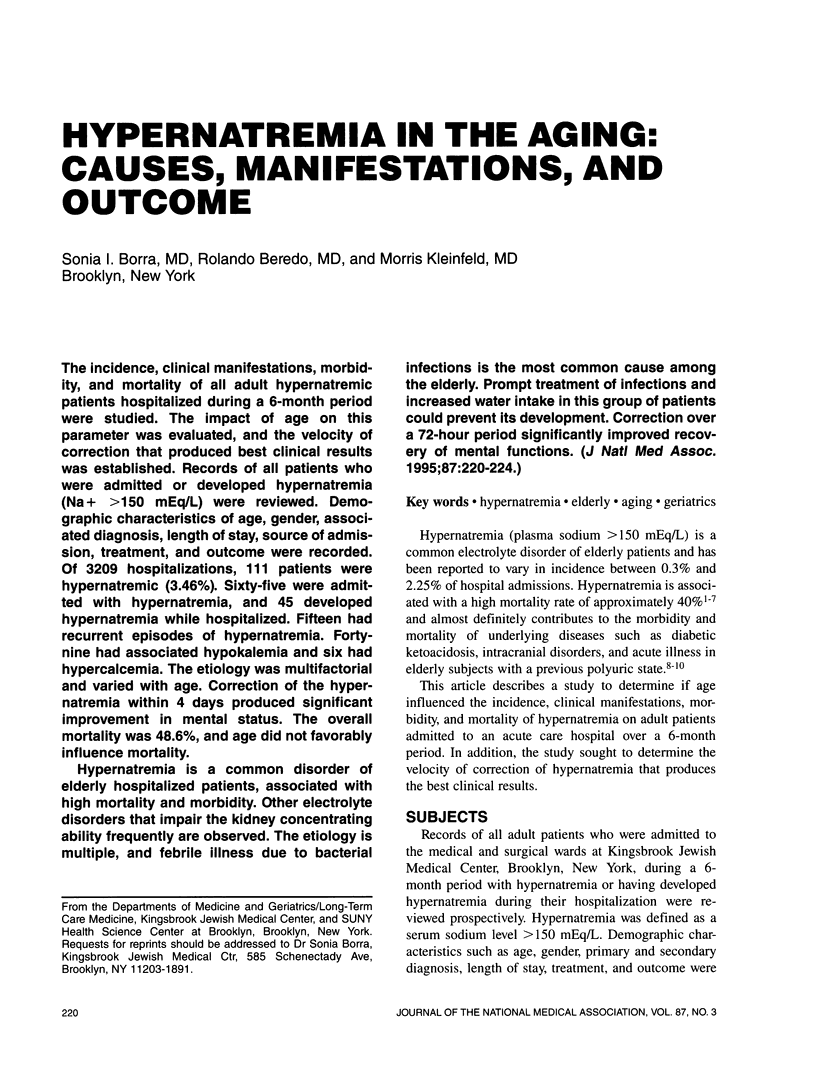
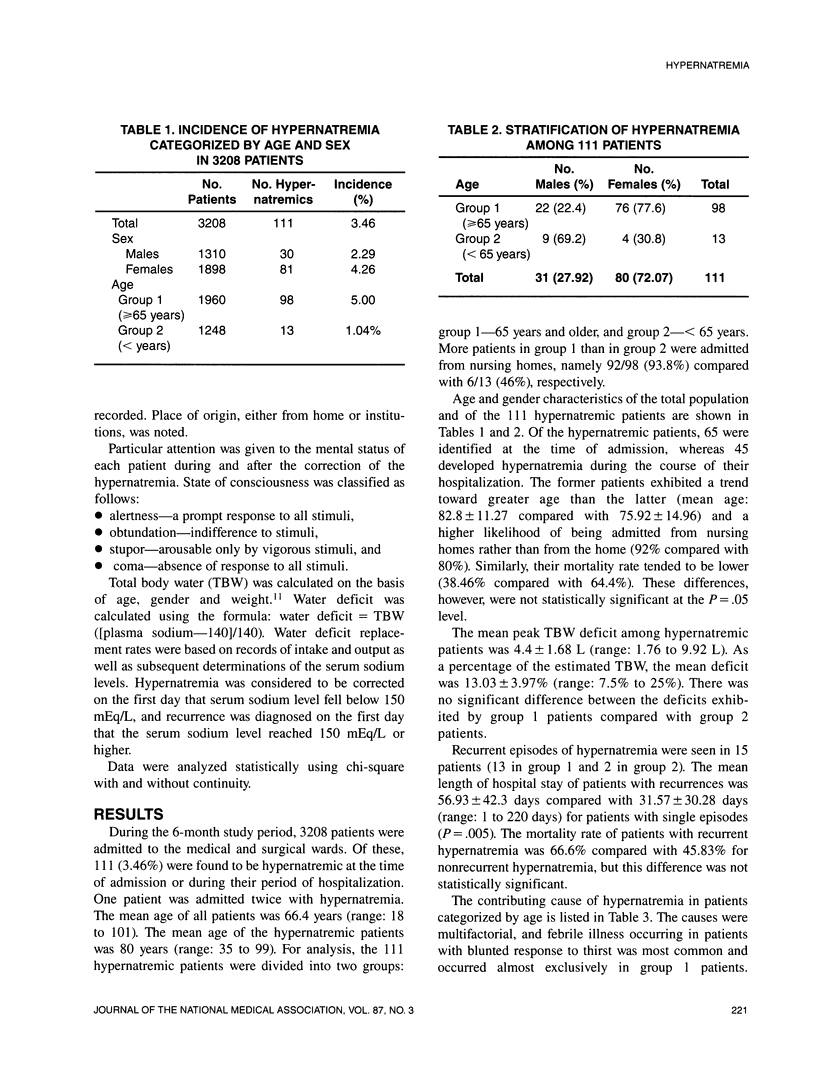
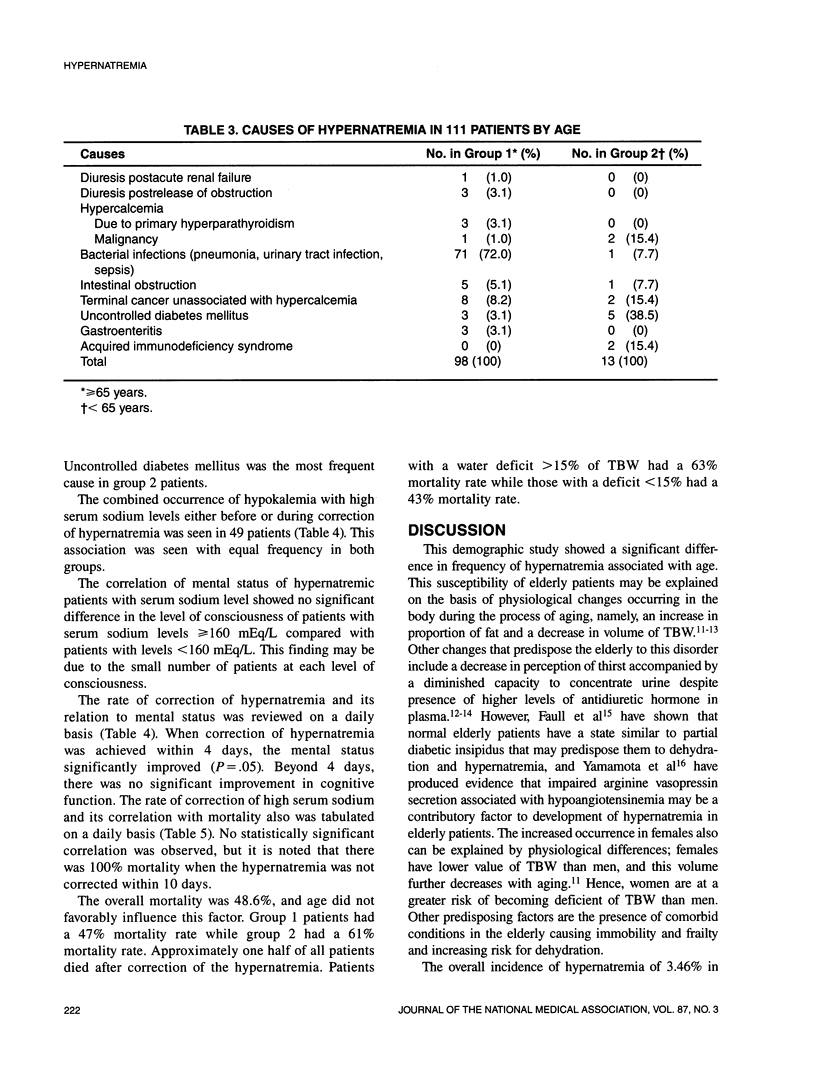
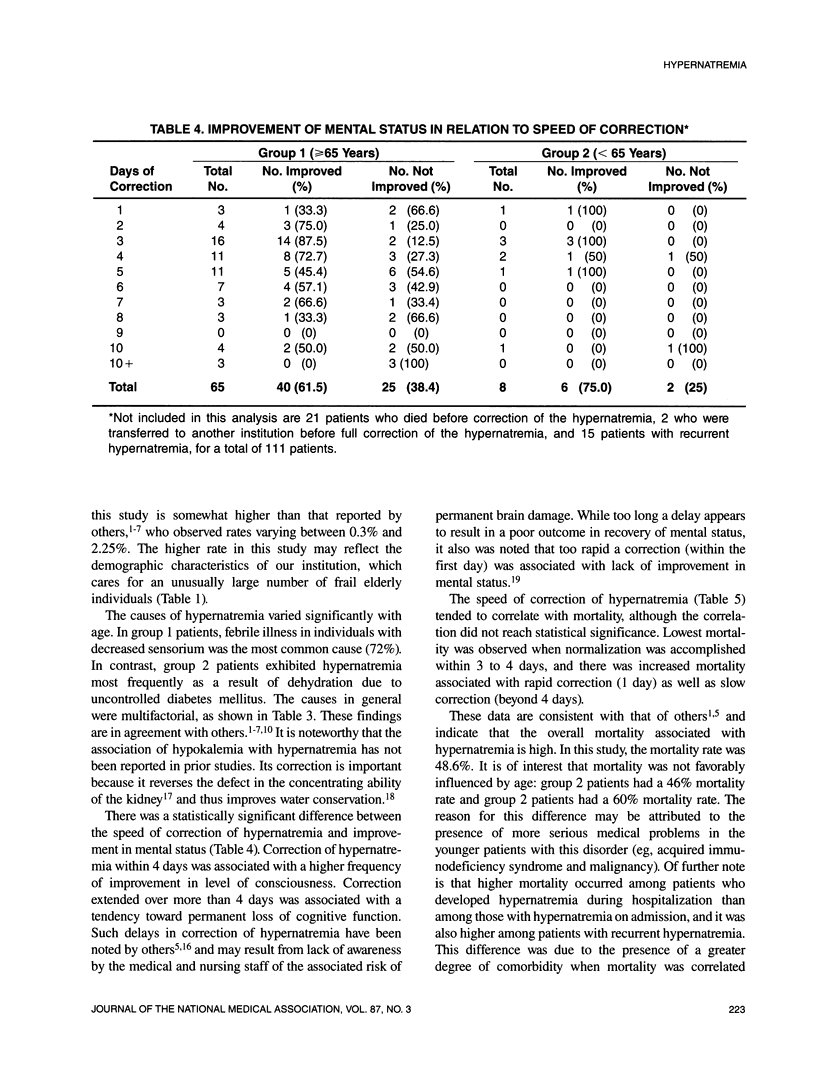
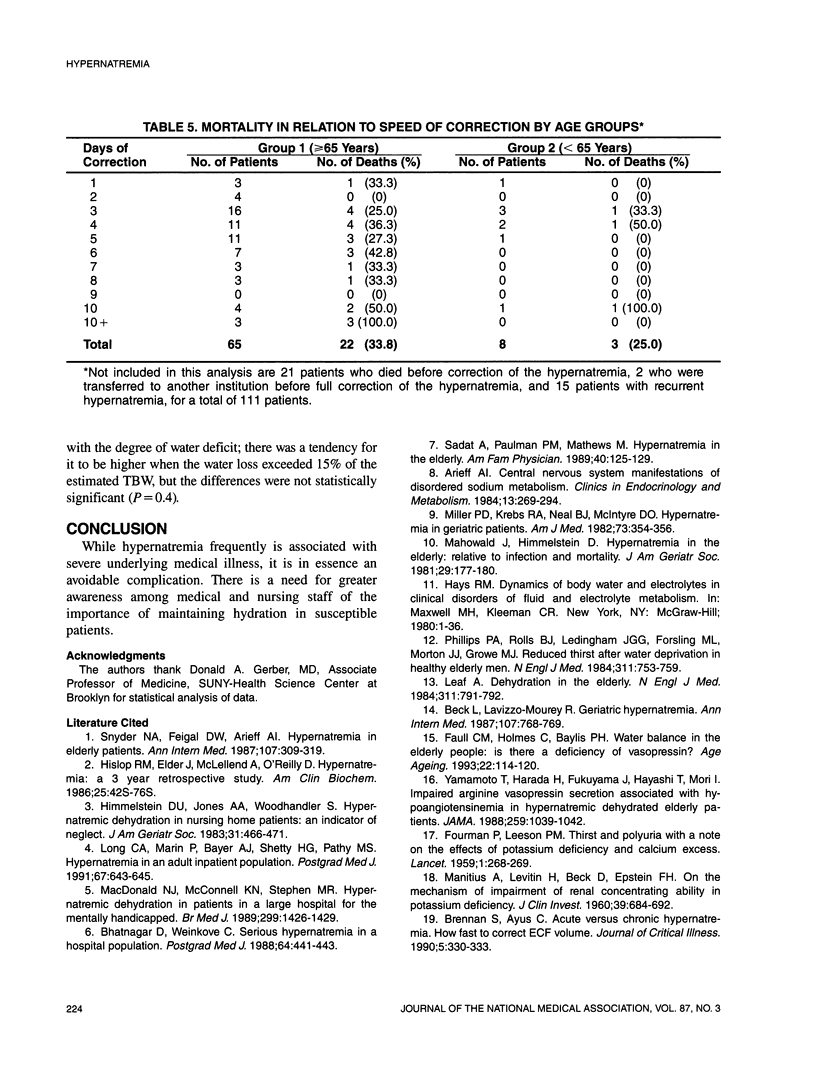
Selected References
These references are in PubMed. This may not be the complete list of references from this article.
- Arieff A. I. Central nervous system manifestations of disordered sodium metabolism. Clin Endocrinol Metab. 1984 Jul;13(2):269–294. doi: 10.1016/s0300-595x(84)80022-5. [DOI] [PubMed] [Google Scholar]
- Beck L. H., Lavizzo-Mourey R. Geriatric hypernatremia [corrected]. Ann Intern Med. 1987 Nov;107(5):768–769. doi: 10.7326/0003-4819-107-5-768. [DOI] [PubMed] [Google Scholar]
- Bhatnagar D., Weinkove C. Serious hypernatraemia in a hospital population. Postgrad Med J. 1988 Jun;64(752):441–443. doi: 10.1136/pgmj.64.752.441. [DOI] [PMC free article] [PubMed] [Google Scholar]
- FOURMAN P., LEESON P. M. Thirst and polyuria, with a note on the effects of potassium deficiency and calcium excess. Lancet. 1959 Feb 7;1(7067):268–271. doi: 10.1016/s0140-6736(59)90198-9. [DOI] [PubMed] [Google Scholar]
- Himmelstein D. U., Jones A. A., Woolhandler S. Hypernatremic dehydration in nursing home patients: an indicator of neglect. J Am Geriatr Soc. 1983 Aug;31(8):466–471. doi: 10.1111/j.1532-5415.1983.tb05118.x. [DOI] [PubMed] [Google Scholar]
- Leaf A. Dehydration in elderly. N Engl J Med. 1984 Sep 20;311(12):791–792. doi: 10.1056/NEJM198409203111209. [DOI] [PubMed] [Google Scholar]
- Long C. A., Marin P., Bayer A. J., Shetty H. G., Pathy M. S. Hypernatraemia in an adult in-patient population. Postgrad Med J. 1991 Jul;67(789):643–645. doi: 10.1136/pgmj.67.789.643. [DOI] [PMC free article] [PubMed] [Google Scholar]
- MANITIUS A., LEVITIN H., BECK D., EPSTEIN F. H. On the mechanism of impairment of renal concentrating ability in potassium deficiency. J Clin Invest. 1960 Apr;39:684–692. doi: 10.1172/JCI104084. [DOI] [PMC free article] [PubMed] [Google Scholar]
- Macdonald N. J., McConnell K. N., Stephen M. R., Dunnigan M. G. Hypernatraemic dehydration in patients in a large hospital for the mentally handicapped. BMJ. 1989 Dec 9;299(6713):1426–1429. doi: 10.1136/bmj.299.6713.1426. [DOI] [PMC free article] [PubMed] [Google Scholar]
- Mahowald J. M., Himmelstein D. U. Hypernatremia in the elderly: relation to infection and mortality. J Am Geriatr Soc. 1981 Apr;29(4):177–180. doi: 10.1111/j.1532-5415.1981.tb01761.x. [DOI] [PubMed] [Google Scholar]
- Miller P. D., Krebs R. A., Neal B. J., McIntyre D. O. Hypodipsia in geriatric patients. Am J Med. 1982 Sep;73(3):354–356. doi: 10.1016/0002-9343(82)90726-4. [DOI] [PubMed] [Google Scholar]
- Phillips P. A., Rolls B. J., Ledingham J. G., Forsling M. L., Morton J. J., Crowe M. J., Wollner L. Reduced thirst after water deprivation in healthy elderly men. N Engl J Med. 1984 Sep 20;311(12):753–759. doi: 10.1056/NEJM198409203111202. [DOI] [PubMed] [Google Scholar]
- Sadat A., Paulman P. M., Mathews M. Hypernatremia in the elderly. Am Fam Physician. 1989 Jul;40(1):125–128. [PubMed] [Google Scholar]
- Snyder N. A., Feigal D. W., Arieff A. I. Hypernatremia in elderly patients. A heterogeneous, morbid, and iatrogenic entity. Ann Intern Med. 1987 Sep;107(3):309–319. doi: 10.7326/0003-4819-107-2-309. [DOI] [PubMed] [Google Scholar]
- Yamamoto T., Harada H., Fukuyama J., Hayashi T., Mori I. Impaired arginine-vasopressin secretion associated with hypoangiotensinemia in hypernatremic dehydrated elderly patients. JAMA. 1988 Feb 19;259(7):1039–1042. [PubMed] [Google Scholar]


